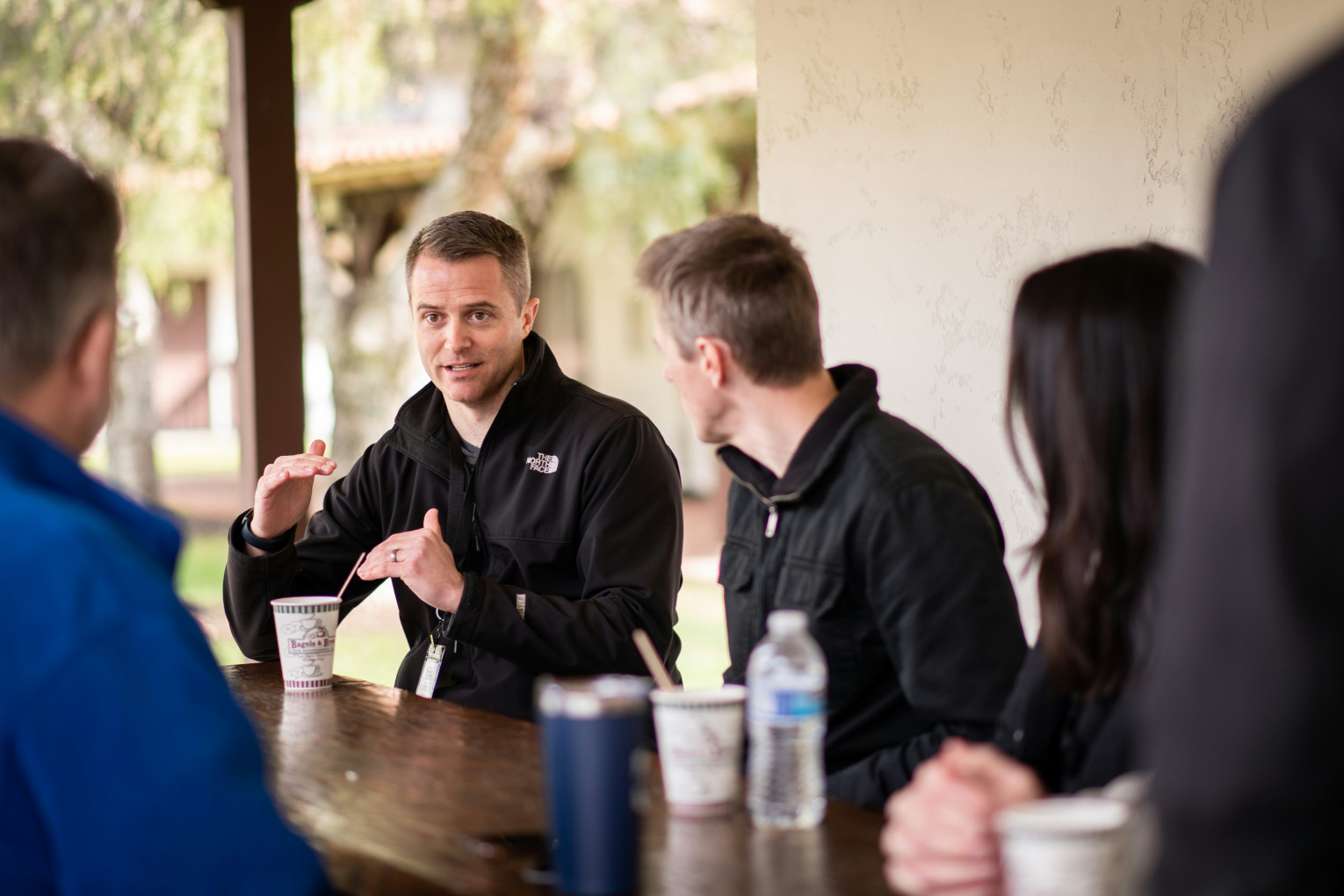


What is the secret ingredient that makes some businesses so successful? Is it the speed at which they innovate or their ability to consistently deliver great service to their customers?
Actually, it’s all of these things and more, and they’re underpinned by a common denominator: team cohesion.
What is team cohesion?
Team cohesion is the process of unifying your workforce towards a shared objective. It’s about understanding that strong teams aren’t merely a sum of their components. Sure, strong individuals are beneficial to your business, but it takes more than that to achieve great things.
Build your own unstoppable ant colony
Ant colonies are nature’s finest example of impeccable team cohesion. By observing them, we can learn a lot about the importance of teamwork and the potential of a unified workforce.
A single ant left to fend for itself is impossibly strong. In fact, one ant is capable of lifting between 10 and 50 times its body weight. To put it into perspective, that’s the equivalent of an 80-kilogram male lifting a 4000-kilogram hippopotamus above his head.
While this is no doubt interesting, it’s what the ants achieve as a team that truly deserves recognition. Although strong, one ant would not be capable of overthrowing enormous foes and constructing vast subterranean networks.
But a team of ants can.
Ant colonies demonstrate exceptional teamwork and leadership skills to accomplish unthinkable feats.
With this concept in mind, imagine what your team could achieve with the same machine-like cohesion found in ant colonies. Okay, you might have some strong individuals in your team, but it’s how you make them work together that truly counts.
How can you improve team cohesion?
Improved team cohesion doesn’t occur without purposeful action from managers. It’s an ongoing process that must be regularly appraised and reanalysed, especially as new employees arrive and others leave.
Bruce Tuckman, an American Psychological Researcher, gained notoriety for a theory he published in 1965 known as Tuckman’s Stages of Group Development. Tuckman’s theory explains that there are five identifiable stages that lead to a cohesive team: Forming, Storming, Norming, Performing and Adjourning.
The theory can be applied to any team, regardless of size and experience. Your team will fit into one of the four stages and it’s up to you to decipher which.

The forming stage
When a new team is formed, they’re not so much a unified workforce as they are a group of individuals trying to figure out where they fit in. At this stage, your employees are likely on high alert, perhaps anxious, trying to understand the boundaries of others and make theirs known too.
As they adjust to their role, they’re slowly getting to grips with their responsibilities, learning what’s expected of them and how they contribute to the bigger picture.
How can you make things better?
Build relationships - Before your team can progress and become more cohesive, they must get to know one another better. This is an obstacle best approached with team bonding and team-building activities that facilitate employee interaction and nurture interpersonal relationships.
Establish company objectives - Companies with a clear company vision are more likely to be successful. If you imagine a pyramid, the company mission sits proudly at the top, supported by both group and individual goals.
Set group and individual goals - Setting goals for your employees gives them direction and helps them understand how their role contributes to the company mission. This leads to improved productivity, engagement, satisfaction and more.
The storming stage
The storming stage is where the conflict starts to arise within your team, usually appearing because your employees fail to understand how their role contributes to the bigger picture, or because they’re feeling undervalued and unappreciated.
Do your employees seem more concerned with individual goals rather than shared outcomes? If so, your team is probably in the storming stage.
How can you make things better?
Improve communication - Establishing clear and active communication channels is key to building a successful team. Depending on the nature of your team and the environment in which they work, you might consider using online collaboration tools, hosting regular team meetings or organising effective brainstorming sessions.
Resolve conflict ASAP - Regardless of the effectiveness of your team, you’re going to encounter conflict somewhere down the line, it’s how you resolve it that makes the difference. Your employees should feel that they’ve had the opportunity to voice their opinion and find a resolution. Allowing grudges to fester only leads to bigger problems later on.
The norming stage
Teams in the norming stage can resolve conflict effectively, have started to cooperate with their peers and are enjoying the first drops of unification. Your workforce is now working somewhat harmoniously towards a common goal and every employee understands how their role contributes towards it.
Furthermore, communication across all departments is consistent and effective, with a level of transparency being demonstrated by managers.
How can you make things better?
Revise goals and objectives - With so many moving parts, it’s important to frequently reappraise individual goals and objectives to keep your employees engaged.
Empower your employees - By this stage, a basic level of trust has been established and it’s time to give your employees more responsibility and encourage them to make more decisions. Reducing the need for micromanagement grants your team a greater sense of autonomy and frees up more time for managers.
Continue team building - With your team working so efficiently, it’s easy to forget about employee relationships. Continue to organise team-building events where you can improve the weaker areas of your team and develop interpersonal relationships.
The performing stage
At this point, your team is now performing at 100%, everybody is focused on the primary company goal and concerned only with the success of the team. With a solid foundation of trust, employees feel more comfortable taking calculated risks and coming forward with innovative ideas.
How can you make things better?
Celebrate victories - Don’t forget to reward your team after achieving goals. These moments are the perfect time to draw attention to what worked well and provide incentives for upcoming challenges.
Reforecast and set new goals - Your team performs best when they understand what needs to be done. Maintain the efficiency of your team by organising regular meetings to establish new objectives.
The adjourning stage
Upon completion of a major objective, your team will experience relief, among other emotions such as restlessness and despondency. The momentum you and your team have manifested will come to an abrupt halt and you must prepare for imminent changes to the group dynamic. The group will begin to disband and long-term employees might be looking for new opportunities.
How can you make things better?
Prepare for departure - Preparing a structured employee separation workflow will help you to ease this period of transition. How you deal with employee departure has a significant impact on team cohesion as they carry a significant part of the company culture.
Reflect with your team - After all the loose ends have been tied up and the project has come to an end, it’s time to reflect on the efforts of your team. This is the perfect opportunity to acquire and give feedback and reward success.
Begin rebuilding - Upon the completion of a large project, it’s normal for a team to fragment. As mentioned earlier, the process of improving team cohesion is ongoing—it’s now time to regroup, build a cohesive team and prepare for the next objective.
What are the benefits of team cohesion?
Team cohesion is the key to success in the workplace. The benefits of a unified team can be felt by everyone from the managers to the interns, but what changes can you expect to see exactly?
- Improved employee satisfaction
- Boosted self-esteem
- Increased trust
- Reduced anxiety
- Improved innovation rate
- Better customer satisfaction
- Highly quality of work
- Improved efficiency
- Increased revenue
- More success in achieving company goals
What’s the fastest way to improve team cohesion? Organise a company retreat.
Organising a company retreat is the fastest and most effective way to achieve team cohesion. By getting away from the office, your team can focus entirely on building relationships, improving communication, solving problems, innovating solutions and celebrating victories.
Organising your team-building retreat with Surf Office means you can customise your retreat to your needs. Whether you’re a fresh team looking to build relationships or a veteran workforce celebrating another fantastic year, Surf Office will organise a tailor-made, cost-effective and hassle-free solution.
Reach out to us and get one step closer to building a cohesive team.





















